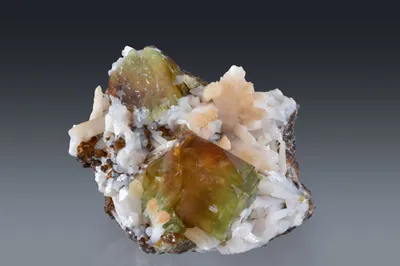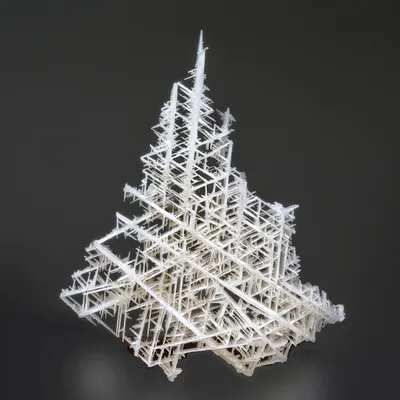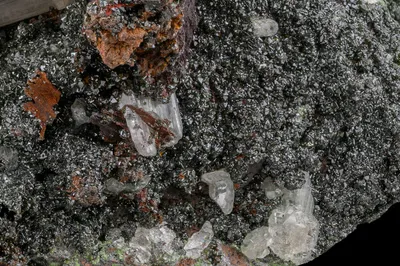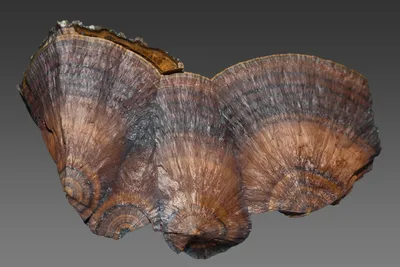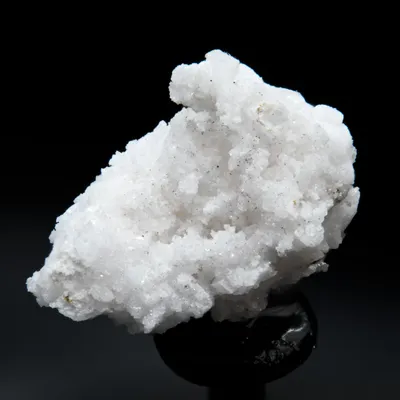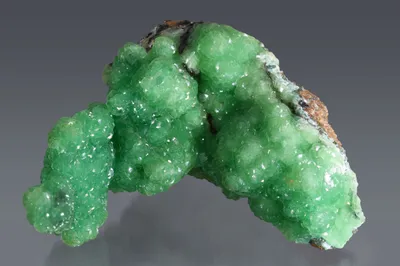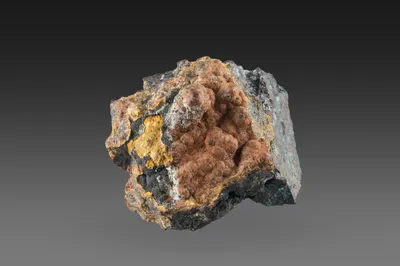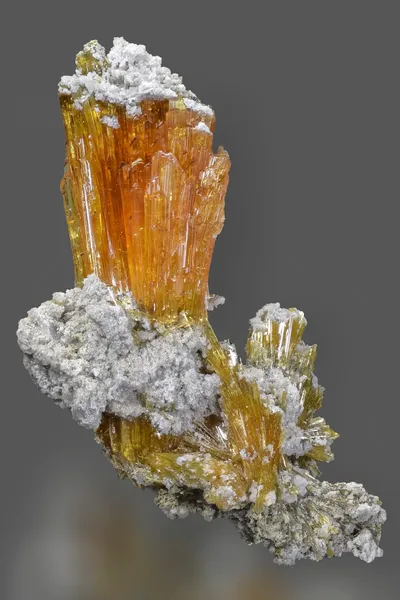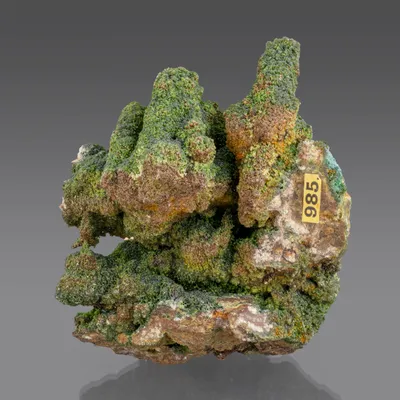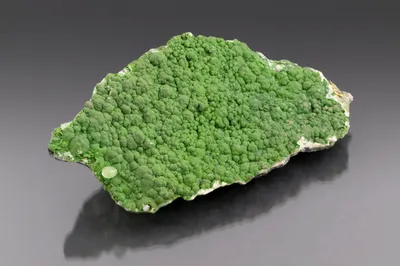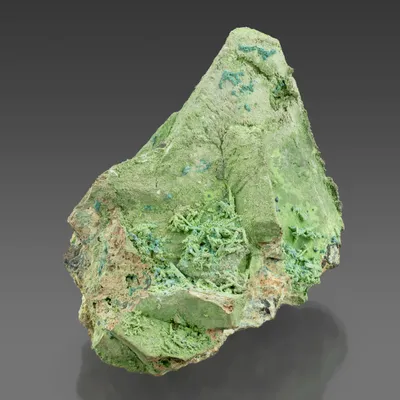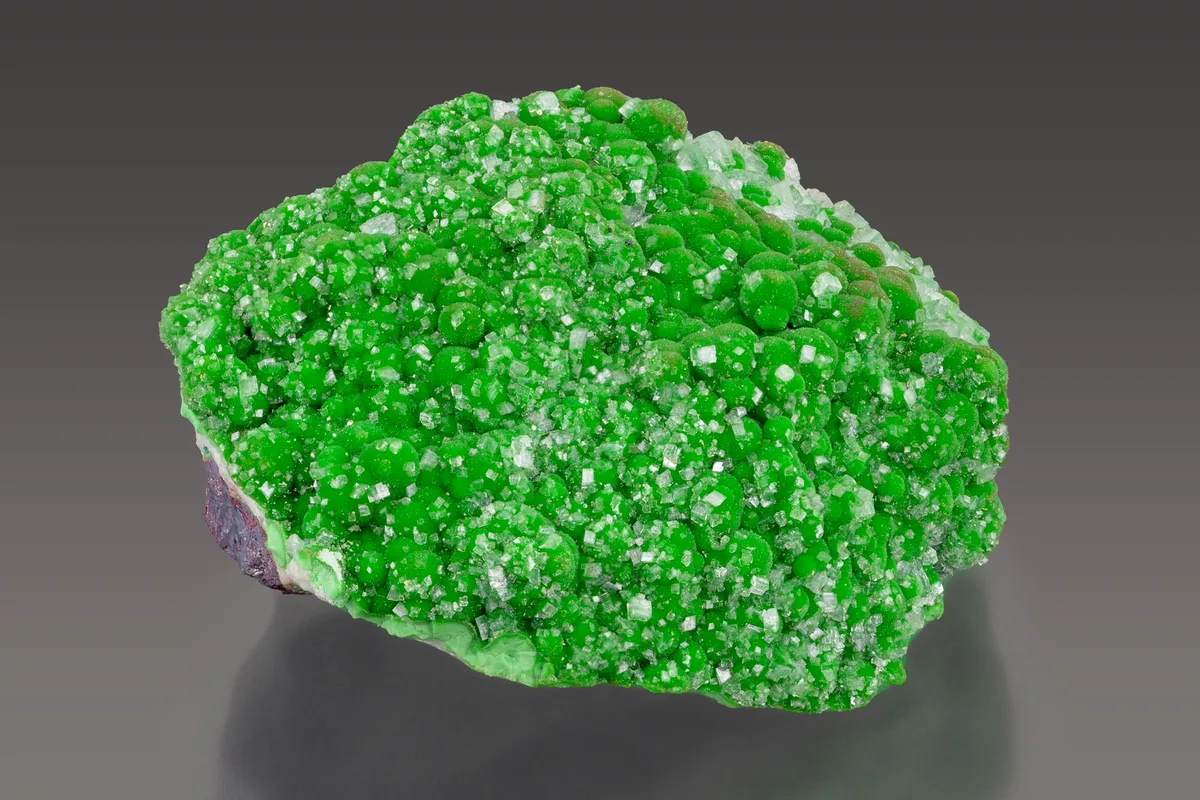
Image Credit: Malcolm Southwood
Mineral Species
Conichalcite
Type Locality
No
Composition
CaCu2+(AsO4)(OH)
Crystal System
Orthorhombic
Status at Tsumeb
Confirmed
Abundance
Common
Distribution
First, second and third oxidation zones
Paragenesis
Supergene
Entry Number
Species; TSNB91
General Notes
Conichalcite is a common and widespread mineral at Tsumeb, but it is easily mis-identified and sometimes overlooked. It occurs most commonly as globular aggregates (typically to c. 3 mm), as botryoidal to reniform crusts, or as irregular masses. The globular structures and crusts commonly comprise very slender, radiating, needle-like crystals. Pohwat (2015b) notes that the colour of conichalcite "… encompasses a range of greens: grass-green, emerald-green, yellowish-green, pistachio-green and dark olive-green."
Conichalcite only rarely presents as free-standing or individual crystals, although the 43 Level find with crystals to 3 mm provides a notable exception in this respect (Gebhard 1999; Von Bezing et al. 2014). Crystals are prismatic to needle-like and elongated on [001] (Keller 1984); Strunz and Tennyson (1967) noted that well-formed crystals are very rare, but that they clearly exhibit "rhombic-disphenoidal symmetry" (for which they provided a crystal drawing).
Conichalcite was encountered in the early years of mining at Tsumeb although apparently mis-understood; the lead-bearing arsenate described as "parabayldonite" by Biehl (1919, cited in Bartelke, 1976) was later shown to be a lead-bearing conichalcite (Guillemin 1956).
According to Back (2022) conichalcite forms two series, with austinite and with cobaltaustinite (although the latter has not been reported from Tsumeb). A range of compositions between conichalcite and austinite has been demonstrated at Tsumeb (Southwood and Carr 2019, unpublished data, University of Wollongong).
The relationship between conichalcite and duftite is inextricably linked with the so-called "duftite problem" (Kharisun et al. 1988) and has been the subject of considerable debate; the relationship between the two minerals is further discussed under duftite.
Conichalcite and duftite are readily confused and compositional analysis is required for certain identification. While visual distinction between these two species is extremely unreliable, associations commonly provide some limited assistance; conichalcite is a likely candidate in lead-poor parageneses, while duftite typically (though not always) occurs in association with other lead minerals. Keller (1984), for example, noted that conichalcite is almost never found with cerussite and wulfenite, but commonly occurs with dolomite and calcite.
Conichalcite may also be confused with mottramite, tangeite or even with zincolivenite (Pohwat, 2015b).
Strunz and Tennyson (1967) described "warts" of conichalcite on dioptase and calcite. They also noted coatings of lead-bearing conichalcite on wulfenite; this apparently contradicts Keller’s (1984) generalisation that conichalcite is "almost never" found with wulfenite. It should be noted, however, that the distinction between lead-bearing (or lead-rich) conichalcite and duftite is not an easy one.
Keller (1977a) noted that conichalcite is much less common at Tsumeb than either duftite or mottramite. He listed typically associated minerals as adamite (most common), smithsonite and willemite (rare) and dioptase, duftite, malachite and olivenite (very rare), and included conichalcite in three of his "Type II" paragenetic sequences (i.e., sequences forming under acidic conditions):
II/4: primary sulphides >> conichalcite >> adamite[zincolivenite] >> schultenite or chudobaite
II/5: primary sulphides >> conichalcite >> adamite[zincolivenite] >> azurite >> malachite
II/6: Primary sulphides >> conichalcite >> tsumcorite >> adamite[zincolivenite] >> smithsonite
Keller (1984) considered conichalcite and "adamite-olivenite" [= zincolivenite (?)] as key minerals in the rare paragenesis from the East 9 Pillar on 31 Level, which includes gaitite, helmutwinklerite, johillerite, prosperite and warikahnite.
On 43 Level, in the third oxidation zone, conichalcite occurred as deep grass-green coloured crystals (to 3 mm) in an unusual paragenesis with calcite, cuprite, and silver-amalgam (Gebhard, 1999).
Conichalcite is noted as a component of the type assemblage for no less than ten new minerals described from Tsumeb: arsentsumebite (Bideaux et al. 1966); chudobaite (Strunz 1960); erikapohlite (Schlüter et al. 2013); fahleite (Medenbach et al. 1988); ferrilotharmeyerite (Ansell et al. 1992); gaitite (Sturman and Dunn, 1980); hermannroseite (Schlüter et al. 2011); johillerite (Keller et al. 1982); minrecordite (Garavelli et al. 1982); prosperite (Gait et al. 1979).
Associated Minerals
adamite; agardite-(Ce); arsenogoyazite; arsentsumebite; austinite; azurite; baryte; bayldonite; calcite; cerussite; chenevixite; chrysocolla; chudobaite; claudetite (?); copper; coronadite; cotunnite (?); cuprite; dioptase; dolomite; duftite; erikapohlite; eugenite; fahleite; ferrilotharmeyerite; fraipontite; gaitite; goethite; goudeyite (?); gypsum; helmutwinklerite; hematite; hermannroseite; hörnesite; hydroxylapatite; johillerite; koritnigite; köttigite; lammerite; ludlockite; lukrahnite; malachite; mimetite; minrecordite; o'danielite; ojuelaite (?); olivenite; plancheite; prosperite; pseudomalachite; quartz; scorodite; silver; smithsonite; tennantite-(Zn); tsumcorite; warikahnite; whitlockite; willemite; wulfenite; zincolivenite
Pseudomorphs
Conichalcite is reported to form pseudomorphs after the following minerals: calcite (rare); chalcocite (rare); cuprite (rare) wulfenite (rare).

